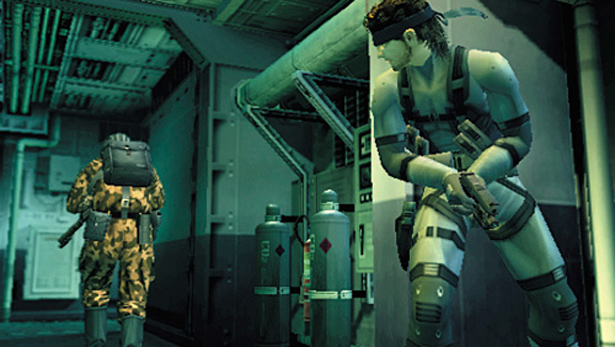The Keys to Successful Stealth Gameplay

It’s undeniable that the lines between the genres are blurring. Juxtaposed against the humongous set pieces and cinematic events are the few and often frustrating stealth elements in titles like Uncharted. On occasion, you would be prompted to stealthily thin out the enemy numbers, but these elements felt hastily put together and were never clear. Enemy vision and what counts as being hidden weren’t clearly defined. An attempt at a stealth kill could easily become a fist fight which would alert every guard for a 5 or so mile radius and more than likely result in your death. Even when playing Bioshock Infinite, i found myself longing for a moment to determine the environment and my options, before the entire population of Columbia began shooting at me. These instances and others lead me to re-assess stealth gameplay, whether as the central focus or as one of many gameplay elements, and the key components to doing it successfully.
1) The Ability to Re-enter Stealth

Batman using gargoyles to sneak up on a guard
This is the most important element to a successful stealth title. Your cover being blown once, due to an experimental tactic not panning out or a guard you hadn’t noticed, shouldn’t completely write off stealth forever. The Batman: Arkham series did this perhaps the best, allowing for organic, seamless re-integration back into stealth and appropriate responses from the bad guys. One simple click back up into the rafters won’t hide you, but move quickly among the gargoyles and you’ll lose the guards easily. What made the game even better was that after a while the bad guys catch onto your trick and respond in various ways, either destroying the gargoyles or with night vision. This made enemies with guns and night-vision important targets who you had to take down first, adding challenge in a way that feels natural. Developers should consider whether they want to add a way to re-enter stealth before adding it as mechanism to gameplay, otherwise it seems like a one-off in what will inevitably be a huge shootout.
2) Clear Indications of Visibility
This is almost as important the ability to re-enter stealth, because players won’t need to re-enter stealth if they know when and where they can and can’t be seen. Assassin’s Creed 2, and onward, do an amazing job of this. As you enter a crowd or it down on a bench or bale of hay it’s clear that you have been removed from the line of sight. You then have a clear indication that you’ve lost your pursuers and can get back to stalking your target. This is key to stealth gameplay. Even The Last of Us stumbled here in my opinion. When moving around trying to clear out as many opponents as possible before the shootout starts, it’s key that the player knows where, and when, they are hidden from view. I once hid from a guard behind a stump that wasn’t even half the height of Joel whilst crouched . This proved inconsistent with the game later on as enemies could see the player if they weren’t hidden. Clear indicators can make a good stealth experience great, and it’s an aspect of stealth we as consumers should demand.

Assassin’s Creed 2 clearly indicating Ezio blending into a crowd
3) Distraction/Aggro
These three important elements tend to coincide. When clearing a large area full of ballistic baddies, the player should be able to lead or lure enemies away from key areas, or to an area where they can silently meet their end. This same distraction mechanic could be used as an element i don’t often see in stealth games, but could make for exciting gameplay; the ability to send your aggro or enemy focus to a different side of the play area. For example, Tomb Raider has a great distraction mechanic when you’re in stealth mode. You can use your arrows to make noise and draw an enemy to any location that you want, whether away or towards you. That same mechanic, if done undetected, should be able to draw enemy fire during an actual firefight, allowing the player to move around unseen to a more advantageous position.
4) Staggered Recognition
This last element is also important to stealth gameplay. How often have you alerted one guard only to have every single guard simultaneously learn your whereabouts and jump to high alert? This kills any feel of realism and is a problem that has been handled successfully by games like the Metal Gear Solid series and Dishonored. These games have an alert system, meaning even if the guards in your immediate area notice you, they have to alert the rest of their forces, giving you time to nip the alert in the bud.
These four elements may seem like a given for stealth-focused games, but more often than not, a lack or focus on these elements are the reasons games either falter or are breakaway hits. When purchasing games, make sure to support the right type of stealth gameplay, and look for the stealth elements as I have outlined here. It’s the best way to use your purchasing power to ensure that true stealth titles continue to be released, and live up to the high standards set by games like Metal Gear Solid, Dishonored and Assassin’s Creed.











